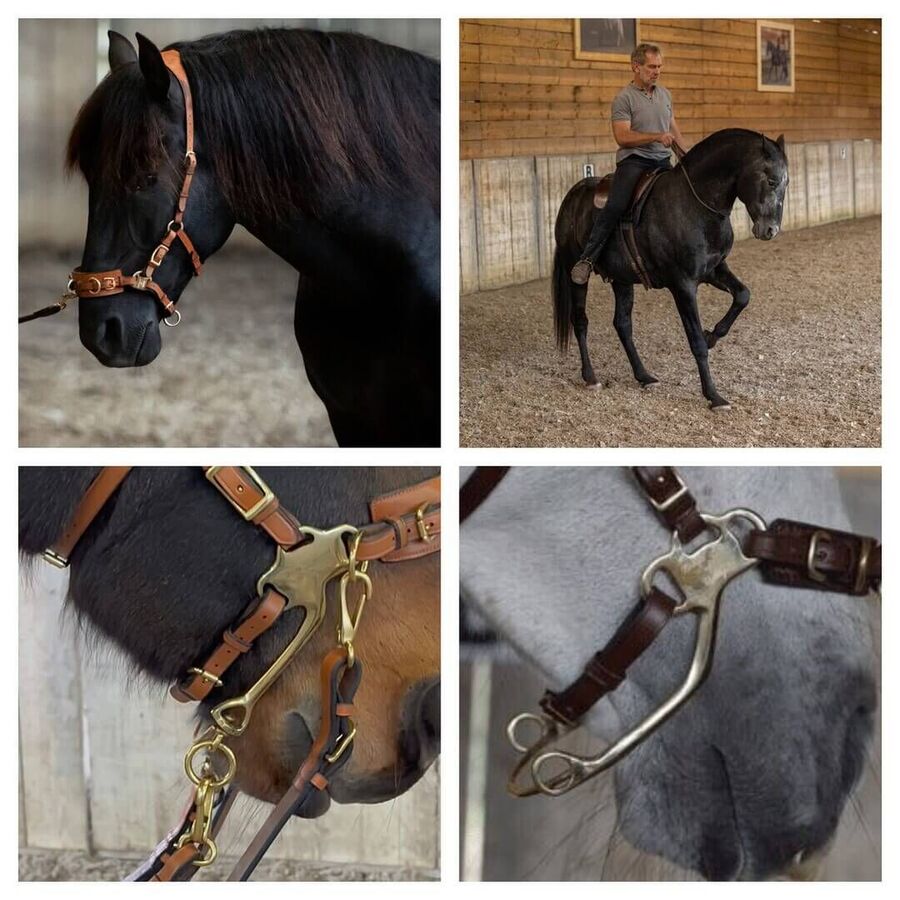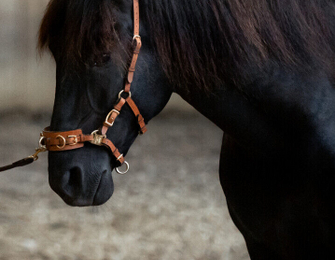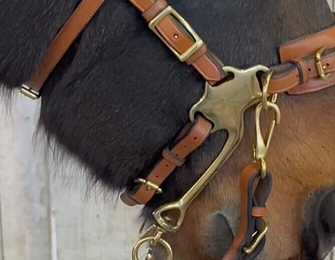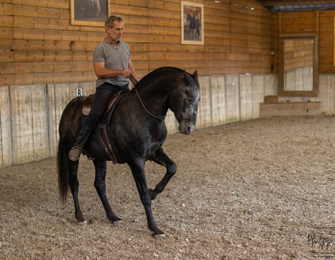How do you start? Which bridle is best to begin with? Below, you will find more information about how Jossy prefers to work, always considering your horse's needs.
Why is it recommended to choose the Cavemore over the Cavesal® for preparatory advanced work?
When using the bosal reins of the Cavesal®, contact with the reins can slightly restrict or "lock" the lower jaw, which does not promote relaxation in this area. As you progress to more advanced work (developing the spine and collection), you will inevitably apply more contact. With the Cavemore shanks, when the horse relaxes at the poll, the lower jaw remains free, even with increased contact.
How do you start?
Before transitioning to the Cavemore, it is recommended to follow this process:
- Use the bosal reins of the Cavesal®.
- Use the sidepull reins of the Cavesal®.
- Use a combination of cavesson reins and bosal reins.
Once this process is complete, you can begin training with the Cavemore for advanced work. This includes riding with more contact to shape the spine (bend, flexion, or collection).
Reins are attached to the Cavemore shanks in combination with the sidepull.
Short summary of the process:
I always start with the two rings attached as bosal reins to the Cavesal®, as this allows the reins to rest in a better position against the neck. This is beneficial for teaching the horse to stop, move backward, and learn indirect rein aids.
Once this process is completed successfully, I add the two rings to the Cavesal® as a sidepull, and I no longer use the bosal reins. At this stage, I begin riding with more contact during gymnastic training (e.g., lateral movements) to steer and lift the head when necessary. The sidepull ensures that the lower jaw remains free of pressure, making it more comfortable for the horse when riding with increased contact.
After this, you can transition to using two sets of reins.
- You can either stay with the Cavesal® using bosal reins and cavesson reins, or
- Switch to a combination of Cavemore shank reins and sidepull reins.
The choice depends on the horse's needs. A general guideline is:
- Use the Cavesal® up to the Squire Test in Academic Riding.
- Then transition to the Cavemore for the Knight Test.
This is, of course, just a guideline.
Summary:
The Cavesal® is a multifunctional bridle with various applications, either separately or in combination:
- The Bosal focuses more on foundational work because it allows for a loose rein and better positioning/contact on the neck for indirect rein aids.
- The Sidepull ensures the lower jaw remains free when riding with more contact during gymnastic work, serving as preparation for the Cavemore.
- The Cavesson improves flexion to the left or right and helps lift the head when the horse is moving too high.
Note: The Sidepull and Cavesson have similar functions, but the Cavesson offers stronger aid transmission.
- The Cavemore is designed for advanced groundwork and riding, such as shaping the spine and achieving collection, where more contact is initially required.
- The Jossy Reynvoet - Neckrein® is a tool that provides feedback throughout the process, from the Cavesal® to the Cavemore and from basic to advanced riding. It helps assess whether the horse is improving in balance, self-carriage, and understanding of the aids.
The ultimate goal is to no longer use any equipment on the horse's head, but to ride the horse purely through your seat, without the use of reins or leg aids.





